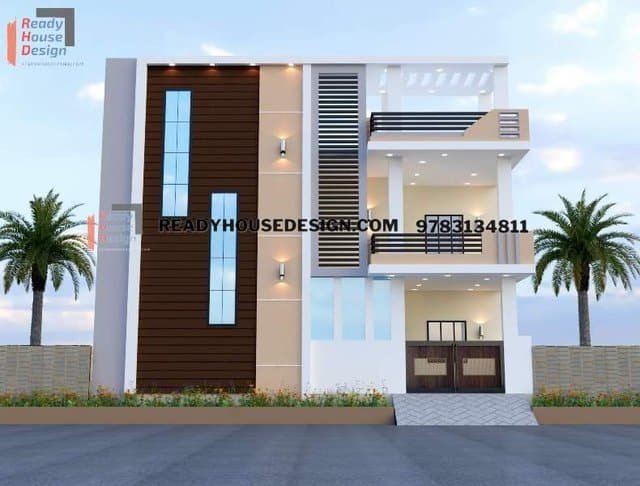new house construction in India
Navigating the Journey of New House Construction in India
Embarking on the journey of constructing a new house in India is a momentous undertaking that involves a blend of dreams, planning, and execution. Whether you’re envisioning a cozy urban dwelling or a sprawling suburban abode, the process demands careful consideration of various factors unique to the Indian context. In this article, we’ll explore the intricacies of new house construction in India, covering key aspects from conceptualization to completion.

1. Vision and Planning:
1.1 Defining Your Vision:
The foundation of any new house construction project lies in a clear vision. What are your requirements, preferences, and aspirations for your new home? Whether it’s a modern design with sleek lines or a traditional aesthetic, crystallizing your vision is the initial step.
1.2 Budgeting and Financial Planning:
Constructing a new house involves significant financial investment. Establishing a realistic budget is crucial, encompassing not just construction costs but also contingencies, permits, and miscellaneous expenses. Financial planning should align with the scope and scale of your vision.
2. Choosing the Right Location:
2.1 Urban vs. Rural Considerations:
The choice of location is pivotal and varies based on individual preferences. Urban areas offer proximity to amenities and services, while rural settings may provide tranquility and space. Consider factors such as commuting, access to schools, healthcare, and future development plans.
2.2 Legal and Regulatory Checks:
Understanding the local building regulations, zoning laws, and obtaining necessary permits are fundamental. Adhering to these regulations ensures a smooth construction process and avoids legal complications later on.
3. Architectural Design:
3.1 Architectural Styles:
India boasts a rich architectural tapestry, blending traditional and modern styles. Your house’s design should harmonize with its surroundings and your personal taste. Engaging with an architect who understands local aesthetics and environmental conditions can be invaluable.
3.2 Vastu Considerations:
For those who follow Vastu Shastra, incorporating Vastu principles into the design is essential. This ancient Indian architectural science focuses on harmonizing the energy flow within a space, influencing layout, orientation, and room placement.
4. Construction Materials:
4.1 Traditional vs. Modern Materials:
India offers a plethora of construction materials, from traditional options like clay bricks and wood to modern choices such as reinforced concrete and steel. The selection should balance aesthetic preferences, climate considerations, and budget constraints.
4.2 Sustainable Building Practices:
Given the increasing emphasis on sustainability, incorporating eco-friendly materials and practices is a growing trend. From recycled materials to energy-efficient solutions, sustainable construction aligns with environmental consciousness.
5. Construction Process:
5.1 Project Management:
Effective project management is pivotal for timely and cost-effective construction. Engaging with a reliable contractor or project manager ensures coordination between different aspects of construction, from site preparation to finishing touches.
5.2 Quality Assurance:
Maintaining construction quality is non-negotiable. Regular site inspections, quality checks, and adherence to construction standards contribute to the longevity and safety of the new house.
6. Interior Design and Finishing:
6.1 Interior Layout:
The interior design should complement the architectural vision. Efficient space utilization, room layout, and considerations for future expansion or modifications should be integral to the interior planning.
6.2 Finishing Touches:
From flooring choices to paint colors, the finishing touches transform a structure into a home. Attention to detail in selecting fixtures, furnishings, and decor adds a personal touch to each room.
7. Technological Integration:
7.1 Smart Home Solutions:
Incorporating smart home technologies enhances the living experience. From security systems to energy-efficient lighting, technological integration aligns with modern lifestyles.
7.2 Energy Efficiency:
Considering India’s diverse climate, incorporating energy-efficient solutions such as insulated windows, solar panels, and efficient HVAC systems can contribute to long-term cost savings.
8. Landscaping and Outdoor Spaces:
8.1 Outdoor Living:
Designing outdoor spaces is integral, whether it’s a small balcony or a spacious backyard. Landscaping with indigenous plants not only adds aesthetic appeal but also contributes to environmental sustainability.
8.2 Sustainable Practices:
Implementing rainwater harvesting, using permeable surfaces, and incorporating green roofs are sustainable landscaping practices that align with environmental conservation.
9. Future-Proofing:
9.1 Flexibility in Design:
Designing with future needs in mind ensures the longevity of your investment. Consider flexible layouts that can adapt to changing family dynamics or lifestyle preferences.
9.2 Technological Adaptability:
Incorporating wiring and infrastructure for future technological advancements ensures that your home remains technologically relevant over time.
10. Conclusion:
Constructing a new house in India is a multifaceted journey that involves weaving together cultural, regulatory, and personal considerations. From the foundational vision to the finishing touches, each step contributes to the realization of a dream home. By navigating the complexities with thoughtful planning, embracing local aesthetics, and incorporating sustainable practices, individuals can embark on the exciting adventure of new house construction with confidence and excitement.

